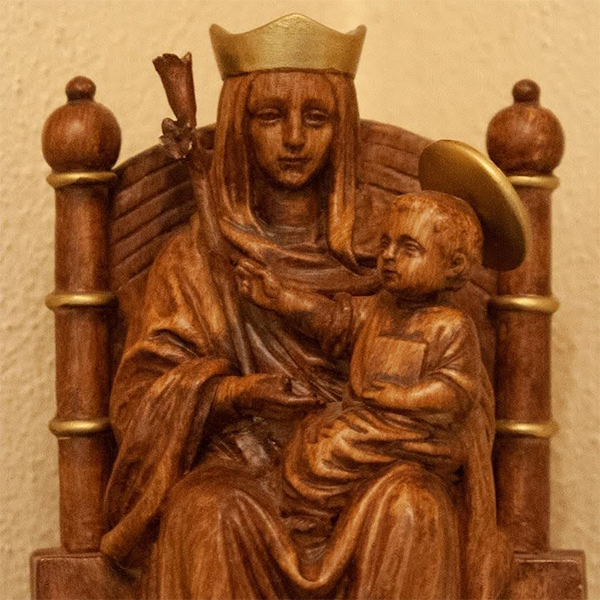Walsingham is a village in Norfolk, England, where by tradition a Saxon noblewoman, the Lady Richeldis de Faverches, founded a site of devotion to the Blessed Virgin Mary in 1061. Richeldis received three visions from Mary to build a replica of the House of Annunciation in Nazareth, called the Holy House, which was later enclosed within a Priory and placed under the protection of Augustinian Canons by the mid 12th century. The Priory was a thriving place of pilgrimage until Henry VIII’s order for the destruction of monasteries in 1538.
Following the Catholic Emancipation Act of 1829, pilgrimages returned to the village’s 14th Century Slipper Chapel in 1897, later re-consecrated as the Catholic Basilica of Our Lady of Walsingham. In 1922, the Anglican Vicar of Walsingham, Fr Hope Patten, commissioned a new statue of Our Lady of Walsingham in the Parish Church of St Mary, based on the medieval seal of Walsingham Priory. The Anglican Shrine of Our Lady of Walsingham was created in 1931 and enlarged in 1938, housing that statue within a new replica of the Holy House. Anglicans and Catholics mark the feast day of Our Lady of Walsingham on September 24, while Angicans recognize an additional feast date of October 15, to celebrate the translation of the statue from the parish church to the shrine and the shrine’s consecration on that day in 1931.
The village remains a popular pilgrimage site, attracting upwards of 150,000 pilgrims each year. Many pilgrims begin at the Slipper Chapel and walk the “Holy Mile” to the Anglican shrine.


